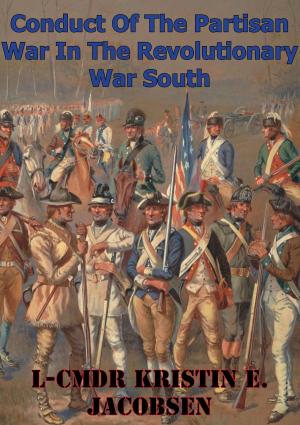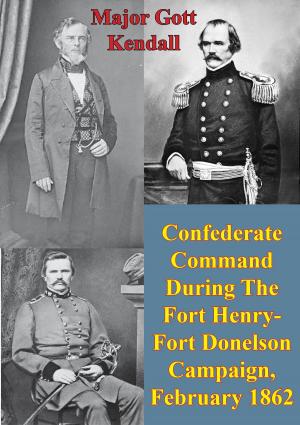The March To The Sea: The Operational Role Of Sherman’s Right Wing
Nonfiction, History, Modern, 19th Century, Americas, United States, Civil War Period (1850-1877), Military| Author: | Major F. Edward Schwabe Jr. U.S. Army | ISBN: | 9781782899464 |
| Publisher: | Golden Springs Publishing | Publication: | November 6, 2015 |
| Imprint: | Golden Springs Publishing | Language: | English |
| Author: | Major F. Edward Schwabe Jr. U.S. Army |
| ISBN: | 9781782899464 |
| Publisher: | Golden Springs Publishing |
| Publication: | November 6, 2015 |
| Imprint: | Golden Springs Publishing |
| Language: | English |
Examines the operations of Sherman’s 15th and 17th Corps during the march through Georgia in the Fall of 1864, with emphasis on their respective roles in support of Sherman’s strategy.
The study focuses on the role of the march within the context of overall Union strategy, the special preparations for the movement to the coast, and the actions of the 15th and 17th Corps during the latter two-thirds of the march (23 November-10 December, 1864). The operations of the 15th Corps are particularly emphasized to highlight its role in forcing the rapid collapse of Confederate opposition in front of Sherman’s advance.
The study concludes that though largely ignored and overshadowed by the actions of the left wing and Union cavalry, the accomplishments of the right wing (particularly the 15th Corps) were a more important validation of Sherman’s strategic gamble. After feinting toward Macon, the 15th and 17th Corps “disappeared” into a sparsely settled wilderness—marching unopposed for over one hundred miles through some of the poorest regions of Georgia. But its movements during this period served to fragment and paralyze Confederate efforts to delay Sherman’s advance, and played a significant role in enabling the Union Army to rapidly gain the coast and to open communications with the U.S. Navy.
At the same time, the study defines the logistical needs of Sherman’s army as its greatest vulnerability—one which the Confederates were unable to exploit.
Examines the operations of Sherman’s 15th and 17th Corps during the march through Georgia in the Fall of 1864, with emphasis on their respective roles in support of Sherman’s strategy.
The study focuses on the role of the march within the context of overall Union strategy, the special preparations for the movement to the coast, and the actions of the 15th and 17th Corps during the latter two-thirds of the march (23 November-10 December, 1864). The operations of the 15th Corps are particularly emphasized to highlight its role in forcing the rapid collapse of Confederate opposition in front of Sherman’s advance.
The study concludes that though largely ignored and overshadowed by the actions of the left wing and Union cavalry, the accomplishments of the right wing (particularly the 15th Corps) were a more important validation of Sherman’s strategic gamble. After feinting toward Macon, the 15th and 17th Corps “disappeared” into a sparsely settled wilderness—marching unopposed for over one hundred miles through some of the poorest regions of Georgia. But its movements during this period served to fragment and paralyze Confederate efforts to delay Sherman’s advance, and played a significant role in enabling the Union Army to rapidly gain the coast and to open communications with the U.S. Navy.
At the same time, the study defines the logistical needs of Sherman’s army as its greatest vulnerability—one which the Confederates were unable to exploit.


![Cover of the book Battles And Victories Of Allen Allensworth, A.M., Ph.D., Lieutenant-Colonel, Retired, U.S. Army [Illustrated Edition] by Major F. Edward Schwabe Jr. U.S. Army](https://www.kuoky.com/images/2014/june/300x300/9781782891222-UZeo_300x.jpg)












